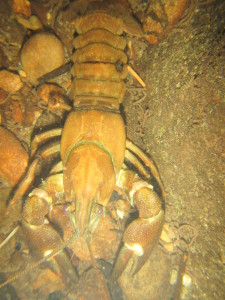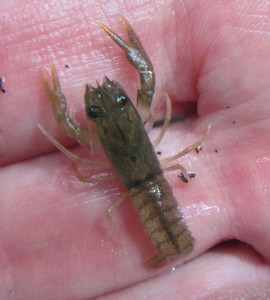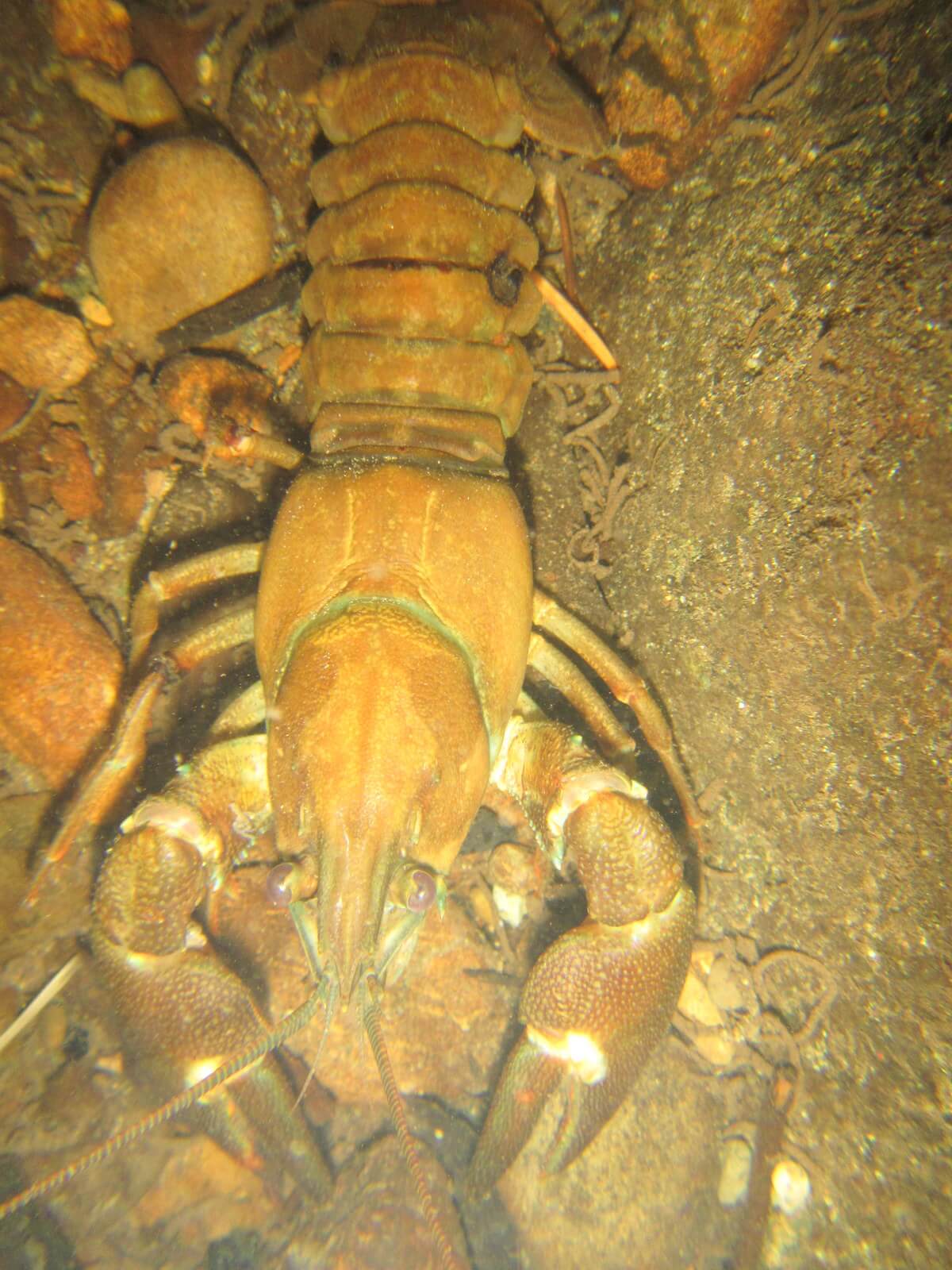
Signal Crayfish that we have found come in sizes from this to smaller than a water skitter. Photo by K Clouston
We have been fairly successful so far in ‘fishing out’ the reach that we plan to de-water on Tues, 4 Aug, as we only caught 59 Coho, 4 Signal Crayfish, a stickleback, a couple of sculpin and a couple of trout today. That brings our total for the almost one block stretch that we have been working in to 1038 Coho, 20 Cutthroat Trout, 7 Rainbow Trout, 34 sculpin, 1 stickleback, 1 possible Morrison Creek Lamprey, 10 Signal Crayfish, 2 possible Western Pearlshell mussels, a couple of caddisfly larvae, a dragonfly nymph and a plethora of water skitters/striders. I know it is bad for the critters to be picked up and dumped over the netting but this is the part of our projects that I really enjoy as I find out exactly what lives in a particular stretch of the Creek.

Miniature Signal Crayfish. Photo by K Clouston
For anyone that wants to join the treasure hunt:
We could use a little help, especially this weekend to prepare and also Tuesday. Timing is flexible, work is ongoing at the end of Second Street near Willemar.
Thanks to everyone who has helped so far.
Some of us have already been busy setting up isolation nets at the 2nd and Willemar location, distributing notices and talking to neighbours. Here’s the cool part: we’ve been working in the cool of the stream, fishing, fishing and more fishing.
What we need to do this weekend:
-More fishing with the pole seine until all critters are moved to safety. This is a lot of fun, especially on a hot day.
-Filling a couple dozen sandbags. We need these to build a coffer dam.
-Tying back a few branches to prepare access for machines without cutting many branches

Lamprey and Coho prior to transfer to safety. Photo by K Clouston
Then Tuesday morning, starting at 9:00 am:
–We will make a sandbag dam to shift all the flow into the other channel to dewater the work site
-Immediately afterwards we need lots of people to collect the remaining fish in isolated pools/puddles
-Immediately start collecting any juvenile lamprey as they come to the top of the soft sediment
Shorts, short-sleeved shirts (as there are deep pools) and water shoes are best for working in the stream and gloves might be more comfortable for some of the work.





